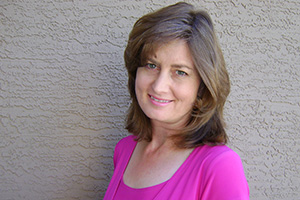

I was 9 years old when the U.S. Supreme Court invented the right to abortion. I still remember Dr. Carolyn Gerster, one of the founders of the National Right to Life Committee, visiting our parish one Sunday morning.

The late Fr. Eugene Maguire, our pastor, did something remarkable. He took to the pulpit and told all the children ages 14 and under to step outside while Dr. Gerster addressed the congregation.
What? Recess during Mass? This was unprecedented. My heart sank however, when I found out the reason we’d been hustled outdoors: killing babies in their mothers’ wombs had become the law of the land. My 9-year-old brain couldn’t fathom such evil.
Being a little more street smart about these things than adults realized, a playground discussion quickly ensued. Though I didn’t completely understand the details of what the older kids were saying, the thing that stayed in my mind was that a tremendous injustice had occurred.
Fast-forward three years and I was sipping grape soda onboard a bus headed for St. Joseph’s Youth Camp near Mormon Lake. The teenage camp counselor sitting next to me was a red-headed girl named Ellen Sweeney who was constantly cracking jokes and making us laugh. I found out that she and her sister Bridget were part of an organization called Arizona Youth for Life that was working to end abortion. The next fall when I returned to school, I discovered a classmate was involved in the same group.
And that, as they say, was how it all began. As a student at the since-closed but forever illustrious Gerard Catholic High School, I was initiated into the ways of activism. We learned how to organize demonstrations, debate, put together a newsletter and hold fundraisers. We planned pro-life Masses, held prayer vigils and volunteered at Crisis Nursery and the St. Vincent de Paul Dining room.
Our leaders — college kids — taught us how to give presentations, betting that students were much more likely to be persuaded by their peers than by middle-aged Planned Parenthood employees. They were right.
Drastic times, drastic measures
It was 1979 and there was this sense of urgency — that abortion was slowly becoming accepted. An unthinkable six years had passed since Roe v. Wade and we were convinced we had to do something drastic.
“If we really believe they’re killing babies inside those clinics, why are we just standing around outside? Why don’t we walk in there and make them shut the place down?” That thinking became part of an ongoing discussion within the group. I remember checking out Martin Luther King’s “Letter from a Birmingham Jail” and being deeply inspired by his determination and courage.
The next thing I knew, we were organizing a sit-in at a Planned Parenthood clinic. Some of my closest friends were practicing what to do when the police would be called to the scene to make arrests.
I have to smile when I think of the way I begged my dad to allow me to be part of the effort.
“Absolutely not,” he said, though he drove me to every single meeting. My best friend’s father was of the same mindset. But we were both there, nonetheless, when our friends were dragged off to jail. We were there for the weeklong trial that ensued and for the accompanying flurry of media coverage.
And we’re still here. We’re parents and teachers and journalists and lawyers and social workers and we are all still committed to protecting the innocent unborn and their mothers who desperately need our support.
In the years since my high school graduation, I’ve met dozens of women who regret their abortions with all their hearts, who now devote themselves to helping other women to not make the same mistake they did.
Together, we stand for life. We won’t back down. We’re not giving up and we won’t go away. Technology is on our side as it becomes more and more ludicrous to proclaim the unborn are not human. Polls make it clear Americans don’t like abortion. Young people aren’t falling for the worn-out slogans of the aging pro-abortion advocates.
Time is on our side. Abortion may still be legal, but it’s becoming unthinkable.





